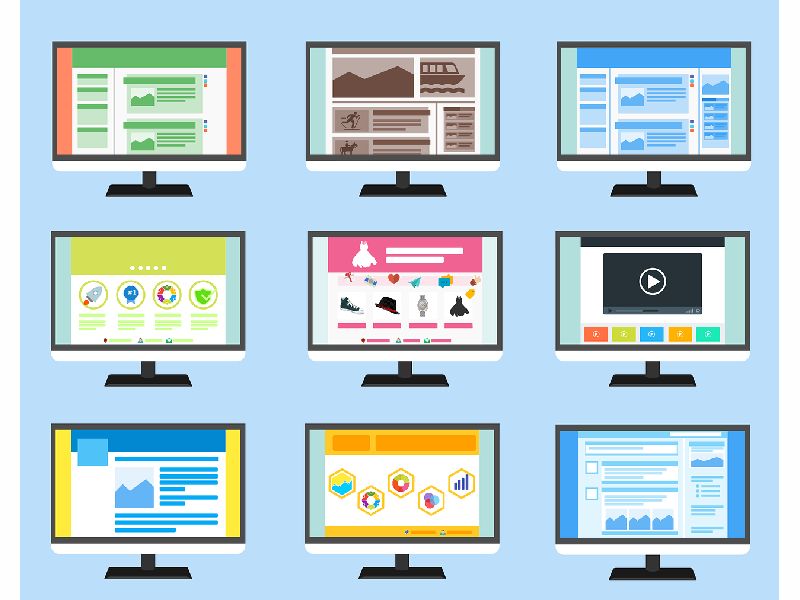Introduction
In the ever-evolving landscape of digital innovation, the marriage of artificial intelligence (AI) and user interface (UI) design emerges as a cornerstone of tomorrow’s user experiences. As technology continues to shape our interactions with digital platforms, the integration of AI into UI design presents a profound opportunity to elevate user experiences to new heights of intuitiveness and adaptability.
At the heart of this synergy lies the quest to create interfaces that not only respond to user inputs but anticipate their needs and preferences with unprecedented precision. From personalized recommendations to seamless interactions, AI-powered UI design holds the promise of transforming the way we engage with digital products and services.
Throughout this exploration, we will delve into the intricacies of AI’s role in UI design, uncovering current trends, envisioning future developments, and navigating the ethical considerations that accompany this technological frontier. But before we embark on this journey, let us first establish a foundational understanding of AI’s integration within the realm of UI design.
Understanding AI in UI Design
Artificial Intelligence, often abbreviated as AI, represents the culmination of decades of research and innovation in the field of computer science. At its core, AI encompasses the development of algorithms and systems that can simulate human-like intelligence, enabling machines to perform tasks that traditionally required human cognition.
When applied to user interface design, AI serves as a catalyst for revolutionizing the way users interact with digital interfaces. Gone are the days of static, one-size-fits-all designs; AI empowers designers to create dynamic interfaces that can adapt and evolve based on user behavior, preferences, and contextual cues.
Consider, for instance, the rise of AI-powered chatbots and virtual assistants. These intelligent interfaces leverage natural language processing (NLP) and machine learning algorithms to understand and respond to user queries in real-time, offering personalized assistance and guidance. Whether it’s providing customer support, facilitating transactions, or delivering relevant content, AI-driven chatbots have become indispensable tools for enhancing user engagement and satisfaction.
Moreover, AI enables UI designers to harness the power of predictive analytics to anticipate user needs and streamline the decision-making process. By analyzing vast amounts of user data, AI algorithms can identify patterns, trends, and correlations, enabling designers to tailor the user experience with unprecedented precision. From suggesting relevant products and services to anticipating user actions, predictive AI transforms static interfaces into proactive, anticipatory systems that seamlessly align with user expectations.
Furthermore, AI facilitates the integration of advanced technologies such as computer vision and gesture recognition, opening up new possibilities for intuitive and immersive user experiences. Whether it’s recognizing facial expressions for emotion detection or enabling gesture-based interactions for augmented reality applications, AI-driven UI design pushes the boundaries of innovation, blurring the lines between the digital and physical worlds.
In essence, AI in UI design represents a paradigm shift in the way we conceive and craft user experiences. By imbuing interfaces with intelligence, adaptability, and responsiveness, AI enables designers to create experiences that are not only functional and aesthetically pleasing but deeply intuitive and engaging.
Current Trends in AI-driven UI Design:
In today’s rapidly evolving digital landscape, AI-driven UI design is at the forefront of innovation, shaping the way users interact with technology. As we delve into the current trends in this dynamic field, we uncover a tapestry of advancements that are redefining the boundaries of user experience design.
Personalization and Customization:
- At the heart of AI-driven UI design lies the concept of personalization. By leveraging AI algorithms to analyze user data and behavior, designers can create interfaces that adapt to the unique preferences and needs of each individual user. From personalized recommendations to tailored content delivery, personalization enhances user engagement and fosters a deeper connection between users and digital products.
Predictive Analytics and Recommendations:
- Predictive analytics represents a powerful tool in the arsenal of UI designers, enabling them to anticipate user actions and preferences with uncanny accuracy. By analyzing historical data and user behavior patterns, AI algorithms can predict future user interactions, allowing designers to proactively tailor the user experience. Whether it’s suggesting relevant products, content, or actions, predictive recommendations empower users to navigate digital interfaces with ease and efficiency.
Natural Language Processing (NLP) and Voice Interfaces:
- The proliferation of voice-activated devices and virtual assistants has ushered in a new era of interaction design, centered around natural language processing (NLP) and voice interfaces. AI-powered voice assistants such as Siri, Alexa, and Google Assistant leverage NLP algorithms to understand and respond to user voice commands, enabling hands-free interaction with digital devices. From performing tasks and answering queries to controlling smart home devices, voice interfaces offer a seamless and intuitive user experience that transcends traditional input methods.
Adaptive and Context-Aware Interfaces:
- In an increasingly connected world, AI-driven UI design is evolving towards adaptive and context-aware interfaces that dynamically adjust to changing user contexts and environments. By integrating sensors, location data, and contextual cues, designers can create interfaces that respond to user context in real-time, offering tailored experiences that are relevant and timely. Whether it’s adjusting screen brightness based on ambient lighting conditions or suggesting nearby points of interest based on location, context-aware interfaces enhance usability and convenience.
As we navigate the landscape of AI-driven UI design, these trends offer a glimpse into the future of user experience innovation. From personalized interactions to predictive recommendations, AI is revolutionizing the way we engage with digital interfaces, ushering in a new era of smarter, more intuitive user experiences.
Real-Life Story: Emma’s Journey with an AI-Powered App
Meet Emma, a busy professional juggling the demands of work, family, and personal life. Like many of us, Emma relies heavily on technology to stay organized, connected, and informed. However, amidst the sea of apps and digital tools available, Emma often finds herself overwhelmed and frustrated by the sheer volume of options and the lack of personalized experiences.
One day, while scrolling through her app store, Emma stumbles upon a new productivity app that promises to revolutionize the way she manages her tasks and schedules. Intrigued by the app’s sleek design and innovative features, Emma decides to give it a try, hoping to find a solution to her productivity woes.
From the moment Emma opens the app, she is greeted by a seamless and intuitive user interface that adapts to her preferences and workflow. As she begins to explore the app’s features, Emma is pleasantly surprised to discover its AI-powered capabilities, which offer personalized recommendations, contextual insights, and proactive assistance.
For Emma, the app becomes more than just a tool; it becomes a trusted companion that understands her needs and empowers her to accomplish more with less effort. Whether it’s suggesting optimal times to schedule meetings, prioritizing tasks based on deadlines, or providing tailored productivity tips, the app seamlessly integrates into Emma’s daily routine, enhancing her efficiency and effectiveness.
But the true magic happens when Emma encounters unexpected challenges or roadblocks. Instead of feeling overwhelmed or discouraged, Emma turns to the app for guidance and support. Thanks to its AI-driven intelligence, the app anticipates Emma’s needs and offers timely suggestions and solutions to help her overcome obstacles and stay on track.
As Emma continues to use the app, she marvels at its ability to learn and adapt to her evolving preferences and habits. With each interaction, the app becomes more attuned to Emma’s unique personality and work style, offering increasingly relevant and personalized recommendations.
For Emma, the journey with the AI-powered app is not just about productivity; it’s about empowerment. By leveraging the latest advancements in AI and UI design, the app has transformed Emma’s relationship with technology, turning mundane tasks into meaningful moments of connection and accomplishment.
As Emma reflects on her journey with the app, she is reminded of the transformative power of AI in shaping the future of user experiences. Through thoughtful design and intelligent algorithms, AI has the potential to revolutionize the way we interact with technology, making our lives simpler, more efficient, and more fulfilling.
Emma’s story serves as a testament to the profound impact of AI-driven UI design on our daily lives. As we continue to explore the possibilities of this transformative technology, let us embrace the opportunities it presents to create smarter, more empathetic, and more human-centered user experiences.
Future Developments and Innovations
As we peer into the horizon of AI-driven UI design, we glimpse a future brimming with innovation and possibility. The journey thus far has laid the foundation for a new era of user experiences, but the road ahead is ripe with untapped potential and undiscovered opportunities.
Advanced AI Technologies:
- The future of AI-driven UI design holds the promise of even more advanced technologies and capabilities. From deep learning algorithms to neural networks, AI continues to evolve at a rapid pace, unlocking new avenues for innovation and creativity. As AI becomes increasingly sophisticated, designers will have access to a broader toolkit of tools and techniques for crafting smarter, more intuitive user interfaces.
Augmented Reality (AR) and Virtual Reality (VR):
- Augmented reality (AR) and virtual reality (VR) represent two exciting frontiers in UI design, offering immersive and interactive experiences that transcend traditional interfaces. By integrating AI algorithms with AR and VR technologies, designers can create virtual environments that respond intelligently to user inputs, blurring the lines between the physical and digital worlds. Whether it’s immersive gaming experiences, interactive storytelling, or virtual shopping experiences, AR and VR hold the potential to revolutionize the way we engage with digital content.
Emotional Intelligence and Empathy:
- As AI becomes more integrated into user interfaces, there is a growing emphasis on emotional intelligence and empathy in design. By incorporating sentiment analysis and affective computing techniques, designers can create interfaces that are not only functional but also emotionally resonant. From recognizing and responding to user emotions to providing empathetic support and guidance, AI-driven UI design has the power to forge deeper connections and foster a sense of trust and rapport between users and digital products.
Ethical Considerations and Responsible Design:
- As we push the boundaries of AI-driven UI design, it is essential to remain vigilant about the ethical implications of our creations. From algorithmic bias to data privacy concerns, AI presents a myriad of ethical challenges that require careful consideration and thoughtful design. As designers, we must prioritize transparency, fairness, and accountability in our work, ensuring that our creations uphold the principles of ethical design and respect the rights and dignity of all users.
In the coming years, AI-driven UI design will continue to shape the future of human-computer interaction, offering endless possibilities for innovation and discovery. As we navigate this ever-changing landscape, let us embrace the transformative power of AI to create experiences that are not only smarter and more intuitive but also more compassionate and human-centered.
Conclusion
In the fast-paced world of technology and design, the integration of artificial intelligence (AI) into user interface (UI) design stands as a beacon of innovation and possibility. Throughout this exploration, we have journeyed through the intricacies of AI-driven UI design, uncovering its transformative impact on user experiences and envisioning its future potential.
From personalized recommendations to predictive analytics, AI empowers designers to create interfaces that are not only intuitive and adaptive but also deeply empathetic and human-centered. By leveraging the power of AI algorithms, designers can craft experiences that anticipate user needs, respond to their preferences, and empower them to accomplish more with less effort.
Yet, as we celebrate the achievements of AI-driven UI design, we must also remain vigilant about the ethical considerations that accompany this technological frontier. From algorithmic bias to data privacy concerns, AI presents complex ethical challenges that demand our attention and care. As designers, it is our responsibility to prioritize transparency, fairness, and accountability in our work, ensuring that our creations uphold the principles of ethical design and respect the rights and dignity of all users.
Looking ahead, the future of AI-driven UI design holds boundless opportunities for innovation and discovery. From augmented reality (AR) to emotional intelligence, AI promises to reshape the way we interact with technology, opening up new possibilities for creativity, connection, and empowerment. As we embark on this journey into the unknown, let us embrace the transformative power of AI to create experiences that enrich and enhance the lives of users around the world.
Together, we have the opportunity to shape a future where technology not only serves our needs but also reflects our values and aspirations. By harnessing the full potential of AI-driven UI design, we can create a world where digital interfaces are not just tools but trusted companions, guiding us on our journey towards a brighter, more inclusive future for all.











